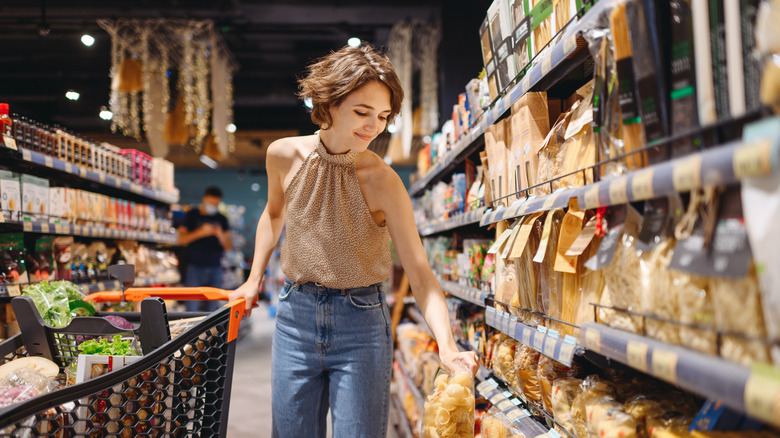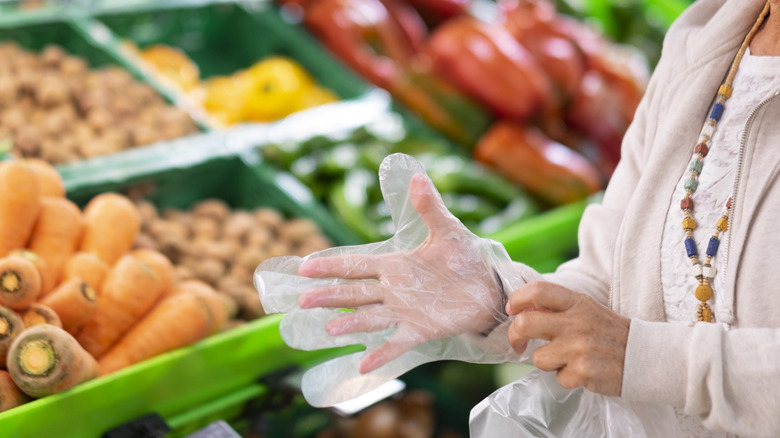The Unspoken Glove Rule Tourists Should Know Before Visiting A Grocery Store In Italy
Bet you didn't know that navigating Italian grocery stores can be quite an adventure. But it's not just because the shelves are filled with more varieties of pasta than you ever knew existed and people are chattering away in another language. They just do things differently over there. For one, you're not supposed to lay even a finger on any food surface without first donning a protective plastic glove. If you break this unspoken rule, locals will side eye you or worse, lecture you in Italian. Can you imagine anything more cringeworthy than having a Nonna finger wag you in the produce aisle for touching a tomato with your naked hand?
To avoid this humiliation, look for the plastic glove boxes near the produce and bread areas, stash a few in your pocket, and put one on before touching any unpackaged food. Most of the major grocery store chains(e.g., Conad, Coop, Esselunga, etc.) will have them, whereas the open-air markets and little mom and pop shops in the smaller towns may not. In that case, you may be off the hook. Just pay attention to your surroundings, watch how other people are doing things, and act accordingly. Also, read up on (and abide by) other unspoken Italian rules to avoid irritating the locals.
Other things to know about Italian grocery stores
Here are a few more things to know about Italian grocery stores to ease your shopping experiences. After you've chosen your produce items and placed them in plastic bags with your gloved hand, you'll have to weigh them yourself before heading to the cashier. To do this, note the item number (it should be clearly marked on the shelf or container) and weigh each bag of items on the small digital scale in the produce area. These scales allow you to choose the image of the item rather than the word, which makes it easier if you don't speak Italian. The scale will then print out a sticker, which you attach to the bag. The cashier will then calculate the price for each bag at checkout.
If you want to use a grocery cart to carry your items, you'll need to pay to use it. But don't worry, you'll get your money back later. Go to the area where the carts are chained together (usually outside or at the front of the store) and insert a .50, 1, or 2 euro coin into the handlebar slot. This unlocks the cart. When you're finished using it, return the cart to the designated area and reattach it to the chain, which causes your coin to be returned. This ingenious system forces customers to return their carts to the designated area so that someone from the store doesn't have to do it later.

